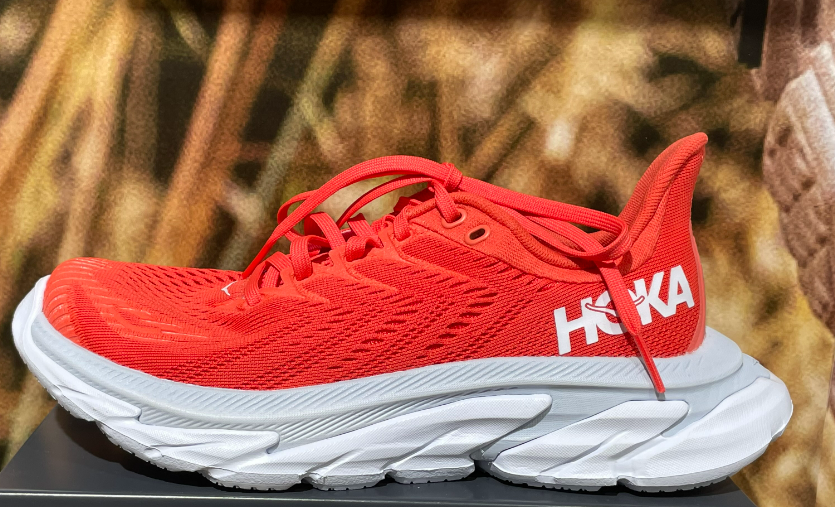
Why Hoka Shoes are Bad?
Share
In a world where comfort and style often go hand in hand, Hoka shoes have emerged as a popular choice among runners and casual walkers alike. These chunky-soled shoes have garnered a devoted fan base thanks to their unique design and marketing. However, in this article, we will delve deeper into the less talked about aspects of Hoka shoes, shedding light on why they may not be the best choice for everyone.
The Hype Around Hoka

Before we dive into the negatives, let's briefly discuss why Hoka shoes have gained such a massive following. Hoka One One, often simply called Hoka, is known for its maximalist running shoes. These shoes are characterized by their thick, oversized midsoles, which aim to provide enhanced cushioning and support. They have become particularly popular among long-distance runners looking for an edge in comfort.
The Downsides of Hoka Shoes
1. Lack of Stability
While the thick midsoles in Hoka shoes do offer unparalleled cushioning, they often come at the expense of stability. The excessive cushioning can make these shoes feel wobbly, especially during lateral movements. This lack of stability can be a major concern for athletes looking to maintain a secure footing.
2. Durability Issues
Hoka shoes may not be the most durable option on the market. The softer midsole materials that provide comfort tend to wear out faster than traditional running shoe materials. This means you might find yourself replacing your Hoka shoes more frequently than you'd like, which can be hard on the wallet.
3. Weight
The maximalist design of Hoka shoes, with their thick soles, often translates into a heavier shoe. While this isn't necessarily a problem for all users, it can be a drawback for those looking for a lightweight running experience. The extra weight may slow you down and contribute to fatigue during longer runs.
4. Limited Terrain Versatility

Hoka shoes are primarily designed for road running, and their design isn't particularly versatile for other terrains. If you're an outdoor enthusiast who enjoys trail running or off-road adventures, Hoka shoes may not provide the necessary grip and durability.
The Importance of Choosing the Right Shoe
It's essential to recognize that while Hoka shoes may have their downsides, they can still be a suitable choice for certain individuals. Your choice of footwear should align with your specific needs and preferences. If cushioning and comfort are your top priorities, Hoka shoes might be worth considering. However, if you're looking for stability, durability, or versatility, there are other brands and models that might better suit your requirements.
Conclusion
In conclusion, Hoka shoes have gained fame for their unique design and maximalist approach to cushioning. However, they come with their fair share of drawbacks, including stability issues, durability concerns, added weight, and limited terrain versatility. When choosing running shoes, it's crucial to prioritize your specific needs and consider the trade-offs involved. Remember that there is no one-size-fits-all answer when it comes to footwear.
FAQs
Q1. Are Hoka shoes suitable for long-distance running?
Ans: While Hoka shoes are known for their cushioning, they may not be the best choice for everyone. Some runners find them comfortable for long distances, but others prefer more stable options.
Q2. Can I use Hoka shoes for trail running?
Ans: Hoka shoes are primarily designed for road running, so they may not provide the necessary traction and durability for trail running.
Q3. How often should I replace my Hoka shoes?
Ans: The lifespan of Hoka shoes can vary depending on usage and running style, but you may need to replace them more frequently compared to traditional running shoes.
Q4. Do Hoka shoes help with joint pain?
Ans: The cushioning in Hoka shoes can provide some relief for joint pain, but it's essential to consult with a healthcare professional for personalized advice.
Q5. Are there lighter alternatives to Hoka shoes with similar cushioning? Ans: Yes, several brands offer lightweight running shoes with ample cushioning. It's advisable to explore different options and try them on to find the best fit for you.

4 comments
Love HOKA Bondi’s. Been wearing for years. Bondi 8’s are my one and only power walking shoes especially after Right and Left Total Knee Replacements. Perfect for everyday wear too. Love the stability, cushion and colors.
I too fell twice while walking in my Hokas! I’m going to toss them and find lighter and less bulky shoes.
I’m a 66 1/2-year-old woman in fairly good shape… I walked all over Paris in my Hoka Clifton nines… Unfortunately walking in my own neighborhood on May 15 while wearing the Hoka Clifton nines I tripped on a sidewalk crack, dislocated my arm and fractured my elbow, I should say pulverized it. I am now sitting here with a cast on my elbow, and a titanium implant has been installed… The shoes I believe were definitely part of the issue… Too much cushion and you lose a sense of what is going on with the Path/roadway you are walking on… Also, it’s important that they are laced up tightly not just slipped on… With socks… Be careful fellow walkers this hurts big time
I am flat footed, 66 years old and have arthritis threwout my body. My dr. Told me to buy bonding 8s. I first purchased the Clinton’s because they we’re out of my size and color I wanted. Those were good but I just bought the bondi8s last month and I am way off balance. I ended up in the emergency room last week with a hairline Crack to my ribs from a fall. They are scaring me. 😨 just wondering 🤔 if anyone else has complained about the same problem?